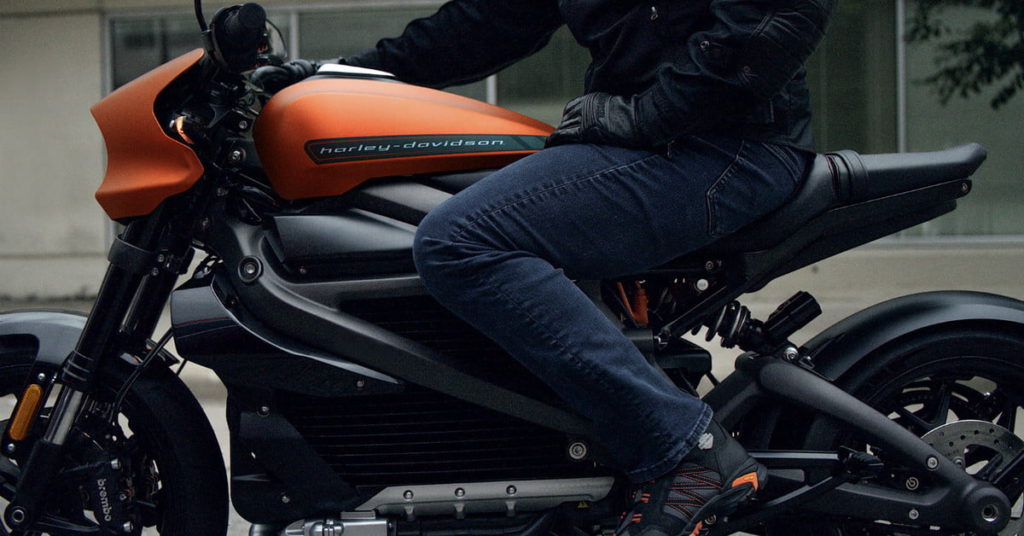Harley-Davidson Teases Components and Style of its Electric LiveWire
We’ll have to wait for January 2019 to get all the details about Harley-Davidson’s 2019 LiveWire all-electric motorcycle. This week, at EICMA 2018 in Milan, Italy, the world’s largest motorcycle show, H-D let loose with many significant details about the LiveWire’s components along with plenty of photographs.
So we still don’t know many of the key facts about the LiveWire, most of which involve numbers. Harley is tight-lipped about the electric two-wheeler’s battery power ratings and the range per charge, vital factors for any electric vehicle. The company says the performance and range are optimized for urban street-riders but didn’t give specifics.
We also don’t have measurements for the bike’s weight, wheelbase, seat height, or lean angles. Even the first question on many potential buyers’ minds remains unanswered: “How much does it cost?”
While we wait for more, and hopefully all, of the LiveWire details in January, now we at least know what the bike looks like. Harley has also released information about many key components.
The first thing you might notice is the tear-drop tank where a gas tank usually sits. There’s no need for gas so we’ll have to learn later what’s under the metal, but the design resembles a Sportster tank. Close-fitting front and rear fenders on black cast wheels give the bike a bobber look that continues from blacked-out handlebars to the tail section and includes most structural members.
The motor is a stressed component of the bike’s aluminum frame, which keeps weight down and helps with rigidity. Because Harley, like most bike manufacturers, likes to call attention to its propulsion systems, the low-hung motor has a bright case cast aluminum case.
Mid-mount driver foot controls and pegs will allow semi-erect seating, although sportbike riders may angle back and use the fold-down passenger pegs instead. The narrow width bars may require more body lean in turns than wider designs.
The LiveWire chassis is designed for navigating urban streets rather than highway touring. It has Showa suspension components front and back. Up front, there’s a Showa SFF-BP (Separate Function Fork-Big Piston), and a Showa BFRC-lite (Balanced Free Rear Cushion-lite) adjustable monoshock rear shock handles the rear.
Dual-disc Brembo Monoblock brakes in front work in conjunction with standard cornering-enhanced anti-lock brakes and traction control systems. The bike rides on co-branded H-D/Michelin Scorcher tires. The LiveWire will have seven selectable riding modes, four factory-preset and three customized by the rider.
A color touchscreen TFT display serves up bike information and acts as a Bluetooth interface for rider infotainment devices. A 12-volt lithium-ion battery powers the lights, horn, controls, and instrumentation.
The main battery is a RESS (Rechargeable Energy Storage System) with lithium-ion cells set within a cast-aluminum case. Fins on the battery casing are designed to help with cooling. A standard onboard Level 1 charger can plug into any regular power outlet via an included cable (kept under the seat). Harley-Davidson says the LiveWire can also connect to Level 2, Level 3, DC Fast Charge DCFC), and CCSE-IEC charging sources. The company also said that dealers who sell the LiveWire (hinting that some may not) would have DCFC charging stations for public use.
In January, when Harley promises to provide pricing and other information about the 2019 LiveWire, the company will also release details on a planned pre-order process. Until then, unless the information is leaked from credible sources, we’ll have to wait to find out all the missing specifics.
In January 2018 Harley-Davidson said its electric motorcycle would be available in 18 months or sooner. With this week’s announcements about the LiveWire, it appears the timeline is unchanged.




